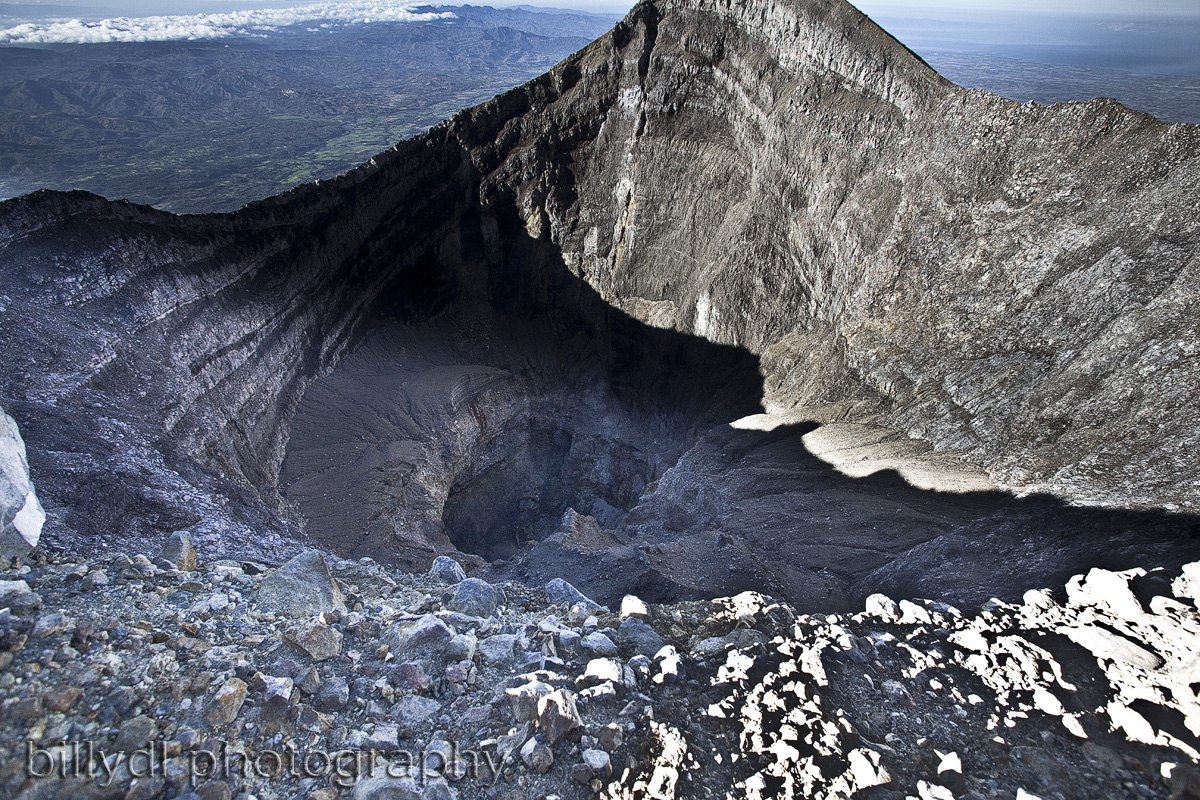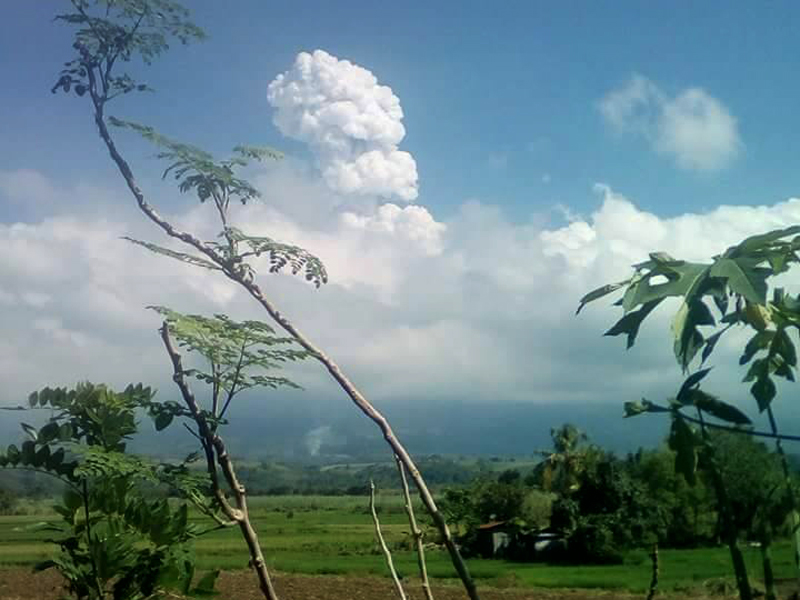Report on Kanlaon (Philippines) — January 2018
Bulletin of the Global Volcanism Network, vol. 43, no. 1 (January 2018)
Managing Editor: Edward Venzke.
Research and preparation by Paul Berger.
Kanlaon (Philippines) Phreatic explosions on 9 December 2017 with ashfall and high seismicity
Please cite this report as:
Global Volcanism Program, 2018. Report on Kanlaon (Philippines) (Venzke, E., ed.). Bulletin of the Global Volcanism Network, 43:1. Smithsonian Institution. https://doi.org/10.5479/si.GVP.BGVN201801-272020
Kanlaon
Philippines
10.412°N, 123.132°E; summit elev. 2435 m
All times are local (unless otherwise noted)
A series of three explosions at Kanlaon on 18 June 2016 sent ash plumes as high as 3 km above the crater and caused minor ashfall in neighborhoods W, SW, and NW of the volcano (BGVN 42:01). This was followed by steam plumes through 25 July 2016. The active Lugud crater (figure 4) has been the source of 21 reported eruptions since 1969; the latest eruption took place in December 2017. Information summarized here for activity from September 2016 through December 2017 was provided by the Philippine Institute of Volcanology and Seismology (PHIVOLCS).
PHIVOLCS reported on 5 May 2017 that since the last phreatic eruption in June 2016 there had been a general decline in activity: seismicity was at baseline levels, no significant deformation had been detected since August 2016, sulfur dioxide emissions were low, and no steaming had been observed since 29 September 2016. The Alert Level was lowered to 0 (on a scale of 0-5), though the public was warned to not enter the 4-km-radius Permanent Danger Zone (PDZ).
Between 24 June and 18 August 2017 the seismic network detected 244 volcanic earthquakes. The PHIVOLCS report noted that the increased seismic activity could be followed by phreatic explosions at the summit crater, despite the absence of visible degassing or steaming from the active vent. The Alert Level was raised to 1. The number of daily volcanic earthquakes increased after 18 August. In their 15 November report, PHIVOLCS indicated that during the previous 24 hours there had been 279 deep volcanic earthquakes recorded (compared to five the day before). This prompted them to raise the Alert Level to 2 (moderate level of unrest), where it remained for the rest of the year. The next day, the number recorded was 217. After that the daily number of volcanic events dropped considerably, especially after 21 November. Based on PHIVOLCS reports, the number of daily volcanic earthquakes during the first eight days of December 2017 varied from one to seven.
On 9 December an approximately 10-minute-long, low-energy phreatic explosion began at 0947 that was heard as far away as La Castellana, Negros Occidental (15 km SW). A plume of voluminous steam and dark ash rose 3-4 km above the summit vent (figure 5), and minor amounts of ash fell in Sitio Guintubdan (23 km W), and barangays W of the volcano (Ara-al, Sag-ang, and Ilihan). The eruption was preceded by the resumption of degassing at the summit crater at 0634, detectable as continuous low-energy tremor during periods when the summit was not visible; degassing was last observed September 2016.
Only three volcanic earthquakes were detected on 10 December, but then the number increased to 155 the next day. The number of daily events earthquakes increased again to 578 on 13 December, rose to 1,007 the next day, and peaked at 1,217 on the 15 December. The earthquake count dropped to 149 on 16 December before returning to six or fewer through 19 December. White steam plumes rose 800 and 300 m above the crater on 13 and 14 December, respectively. White plumes were diffuse on 15 December; weather clouds prevented views of the summit area during 16-18 December. Sulfur dioxide emissions were 603-687 tons per day during 13-14 December.
PHIVOLCS reported that during 19-20 December there were 412 volcanic earthquakes. A low-energy, explosion-type earthquake was detected at 0233 on 21 December associated with gas emissions from the summit area. Later in the day steam plumes rose 400 m and drifted NE. The number of daily volcanic earthquakes increased to 957 the next day and then decreased to less than 20 per day during 22-23 December. The daily earthquake count increased to 382 and 776 events on 24 and 25 December, respectively, decreased to 82 on 26 December, and the dropped to three or fewer over the last days of the year. Weather clouds often prevented observations , but white plumes rose 300 m and drifted NE, NW, and SW on 21 December, and 700 m on 26 December. A steam plume on 30 December was seen rising 500 m above the crater rim and drifting SW. On 30 December 2017, sulfur dioxide levels were measured at an average of 1,946 tonnes/day.
Geological Summary. Kanlaon volcano (also spelled Canlaon) forms the highest point on the island of Negros, Philippines. The massive andesitic stratovolcano is covered with fissure-controlled pyroclastic cones and craters, many of which are filled by lakes. The largest debris avalanche known in the Philippines traveled 33 km SW from Kanlaon. The summit contains a 2-km-wide, elongated northern caldera with a crater lake and a smaller but higher active vent, Lugud crater, to the south. Eruptions recorded since 1866 have typically consisted of phreatic explosions of small-to-moderate size that produce minor local ashfall.
Information Contacts: Philippine Institute of Volcanology and Seismology (PHIVOLCS), Department of Science and Technology, University of the Philippines Campus, Diliman, Quezon City, Philippines (URL: http://www.phivolcs.dost.gov.ph/); Billy Lopue, flickr (URL: https://www.flickr.com/photos/21905294@N03/).



